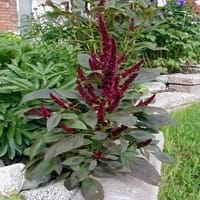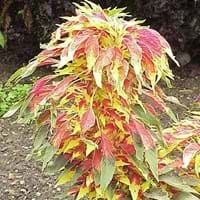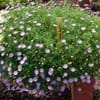Type
Ornamental Plants
Ornamental Plants
Origin
Central America
Africa, Southern Asia
Types
Not Available
Not Available
Habitat
Cultivated Beds
Mediterranean region, Subtropical climates, tropical environments, Tropical regions
USDA Hardiness Zone
3-10
1-15
AHS Heat Zone
-9999
12 - 5
Sunset Zone
21,22
H1, H2, 1a, 1b, 2a, 2b, 3a, 3b, 4, 5, 6, 7, 8, 9, 10, 11, 12, 13, 14, 15, 16, 17, 18, 19, 20, 21, 22, 23, 24
Habit
Arching/Fountain-shaped
Upright/Erect
Flower Color
Red, Green, Purple, Dark Red
Green
Flower Color Modifier
Bicolor
Bicolor
Fruit Color
Brown, Ivory, Pink, White
Tan, Black
Leaf Color in Spring
Red, Green, Purple
Yellow, Red, Green, Burgundy
Leaf Color in Summer
Light Green
Yellow, Red, Green
Leaf Color in Fall
Several shades of Green
Yellow, Red, Green
Leaf Color in Winter
Light Green
Light Green
Plant Season
Spring, Summer, Fall
Summer, Fall
Sunlight
Full Sun
Full Sun, Partial Sun
Type of Soil
Loam, Sand
Loam, Sand
The pH of Soil
Acidic, Neutral, Alkaline
Acidic, Neutral, Alkaline
Soil Drainage
Average
Well drained
Bloom Time
Summer, Late Summer, Early Fall, Fall
Summer, Late Summer, Early Fall, Fall
Repeat Bloomer
Insignificant
No
Tolerances
Drought
Drought
Where to Plant?
Ground, Pot
Container, Ground
How to Plant?
Seedlings, Stem Planting
Seedlings
Plant Maintenance
Medium
Medium
Watering Requirements
Average Water Needs
Average Water Needs, Requires regular watering
In Summer
Lots of watering
Lots of watering
In Spring
Moderate
Moderate
In Winter
Average Water
Average Water
Soil pH
Acidic, Alkaline, Neutral
Not Available
Soil Type
Loam, Sand
Clay, Loam, Sand
Soil Drainage Capacity
Well drained
Clay, Loamy, Sand
Sun Exposure
Full Sun
Full Sun
Pruning
Remove damaged leaves, Remove dead branches, Remove dead leaves
No need to prune, No pruning needed, Remove damaged leaves, Remove dead branches, Remove dead leaves
Fertilizers
Inorganic
All-Purpose Liquid Fertilizer, organic fertlizers
Pests and Diseases
Aphids, Viruses
Prodenia, Red blotch
Plant Tolerance
Drought
Drought
Flowers
Showy
Insignificant
Flower Petal Number
Single
Single
Edible Fruit
Insignificant
No
Fragrant Bark/Stem
Yes
No
Foliage Texture
Coarse
Bold
Foliage Sheen
Glossy
Matte
Self-Sowing
Not Available
Yes
Attracts
Birds
Not Available
Allergy
no allergic reactions
Not Available
Aesthetic Uses
Beautification, Borders
Borders
Beauty Benefits
Good for skin and hair
Not Available
Environmental Uses
Air purification
Air purification
Medicinal Uses
Antidiarrhoeal, Astringent
Diarrhea, Stomach Ulcers
Part of Plant Used
Leaves, Seeds
Leaves, Seeds
Other Uses
Used as colouring in foods, Used As Food, Used to make yellow and green dye
Not Available
Used As Indoor Plant
No
No
Used As Outdoor Plant
Yes
Yes
Garden Design
Cottage garden, Flower borders, Informal Garden
Tropical
Botanical Name
AMARANTHUS hypochondriacus
AMARANTHUS tricolor 'Perfecta'
Common Name
Prince's Feather, Prince-of-Wales-Feather
Joseph's Coat
In Hindi
Silver Clary
tandalja bhaji
In German
Silber Clary
Tampala
In French
Argent Clary
Tampala
In Spanish
Clary plata
Tampala
In Greek
ασημένιο Clary
Tampala
In Portuguese
prata Clary
Tampala
In Polish
Srebrny Clary
Tampala
In Latin
Argentum Clary
Tampala
Phylum
Magnoliophyta
Tracheophyta
Class
Magnoliopsida
Magnoliopsida
Order
Caryophyllales
Caryophyllales
Family
Amaranthaceae
Amaranthaceae
Genus
Amaranthus L
Amaranthus L
Clade
Angiosperms, Core eudicots, Eudicots
Angiosperms, Core eudicots, Eudicots
Tribe
Not Available
Not Available
Subfamily
Amaranthoideae
Amaranthoideae
Number of Species
Not Available
Not Available
Season and Care of Silver Clary and Tampala
Season and care of Silver Clary and Tampala is important to know. While considering everything about Silver Clary and Tampala Care, growing season is an essential factor. Silver Clary season is Spring, Summer and Fall and Tampala season is Spring, Summer and Fall. The type of soil for Silver Clary is Loam, Sand and for Tampala is Loam, Sand while the PH of soil for Silver Clary is Acidic, Neutral, Alkaline and for Tampala is Acidic, Neutral, Alkaline.
Silver Clary and Tampala Physical Information
Silver Clary and Tampala physical information is very important for comparison. Silver Clary height is 111.75 cm and width 0.75 cm whereas Tampala height is 90.00 cm and width 45.70 cm. The color specification of Silver Clary and Tampala are as follows:
Silver Clary flower color: Red, Green, Purple and Dark Red
Silver Clary leaf color: Red, Green, Purple
Tampala flower color: Green
- Tampala leaf color: Yellow, Red, Green and Burgundy
Care of Silver Clary and Tampala
Care of Silver Clary and Tampala include pruning, fertilizers, watering etc. Silver Clary pruning is done Remove damaged leaves, Remove dead branches and Remove dead leaves and Tampala pruning is done No need to prune, No pruning needed, Remove damaged leaves, Remove dead branches and Remove dead leaves. In summer Silver Clary needs Lots of watering and in winter, it needs Average Water. Whereas, in summer Tampala needs Lots of watering and in winter, it needs Average Water.





